Let’s Grow Stuff: Replace your lawn with something better, a beginner’s guide
May 3, 2023 Leave a Comment
Throughout the 2023 season of Let’s Grow Stuff — our videos and the blog — we’ll be following a sustained conversation about lawn conversion, as homeowners Julie and Tony replace theirs in favor of a robust plant community to support wildlife and pollinators in their urban landscape. You’ll meet them in an upcoming episode in early June.
Here at LGS, we want to demonstrate how to replace a conventional lawn. Why? Conventional lawns are pretty harmful, toxic and wasteful things between the chemicals, fertilizer, wasted water for irrigation, fossil fuels for equipment and the noise and air pollution that come with them, and lack of species diversity, not to mention the many hours we’ll never get back that we spend on landscape maintenance. Don’t get me wrong – some lawns are useful things, especially if you have kids or dogs or like to spend time with lawn games like frisbee, croquet and bag toss, and we’ll be covering how you can manage these lawns to reduce their impact in a future blog.
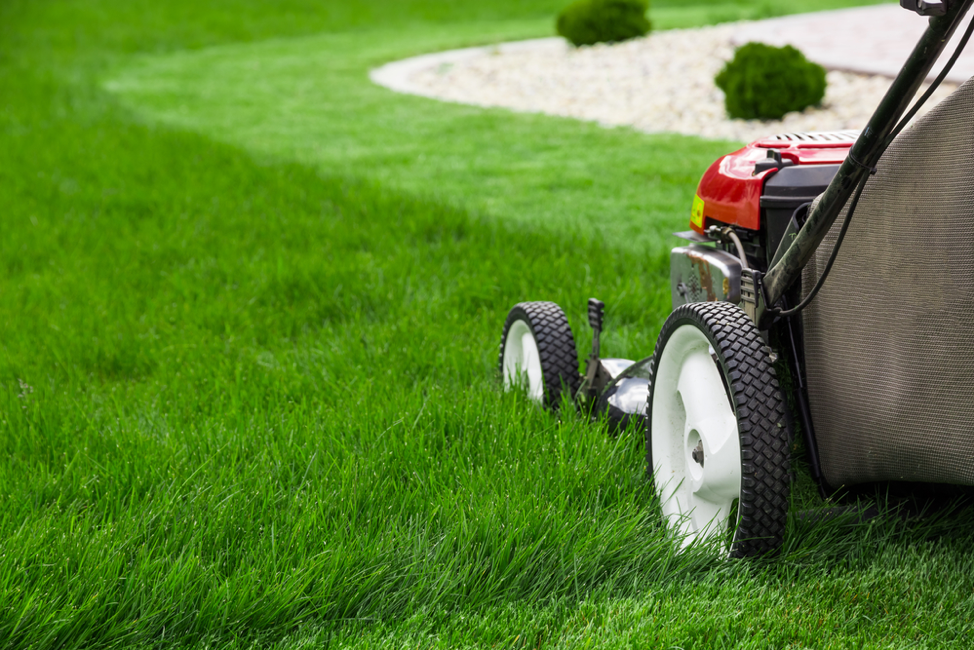
Image courtesy of Prasannanossam3
I advocate for the replacement of purposeless lawns. These are (usually) the front lawn, a green carpet where we don’t spend time, rarely use it for recreation — and it simply exists because we’ve never considered we have alternatives. These spaces could do much more for us and our world, so today, we’re exploring a few ways you can start to think about replacing your lawn for something better.
Our ultimate goal when we replace a lawn is to continue to convey intention and avoid the feeling of neglect. We want our neighbors to know we’re still engaged and active stewards of our landscape and we’re choosing to manage it in a different way. If it looks like we just “gave up and walked away,” that can generate negative attention fairly quickly. We’ll share more about how we convey intent when it comes to our planting design later this season. In the meantime, there are two strategies I’d suggest you employ ASAP as you begin to prepare your conventional turf for new plantings.
Strategy One: Interpretation
With any of the options to remove turf we’ll present below, I can’t stress enough how important it is to provide interpretive signage for passersby, especially if you live in an urban area with stricter code enforcement or perhaps an HOA. Interpretive signage helps you share what’s happening with your landscape and why you’re removing some turf. Think of it like having a conversation with everyone who walks by. We want to address people’s curiosity and invite them to learn more. Think about answering the questions you’d have if you walked by a lawn in transition: “What’s going on here? Why are they doing this? I wonder what’s growing. I don’t recognize that plant.” Something as simple as a mailbox with handouts or a laminated sign can do the trick, or you can buy pre-made signs online.
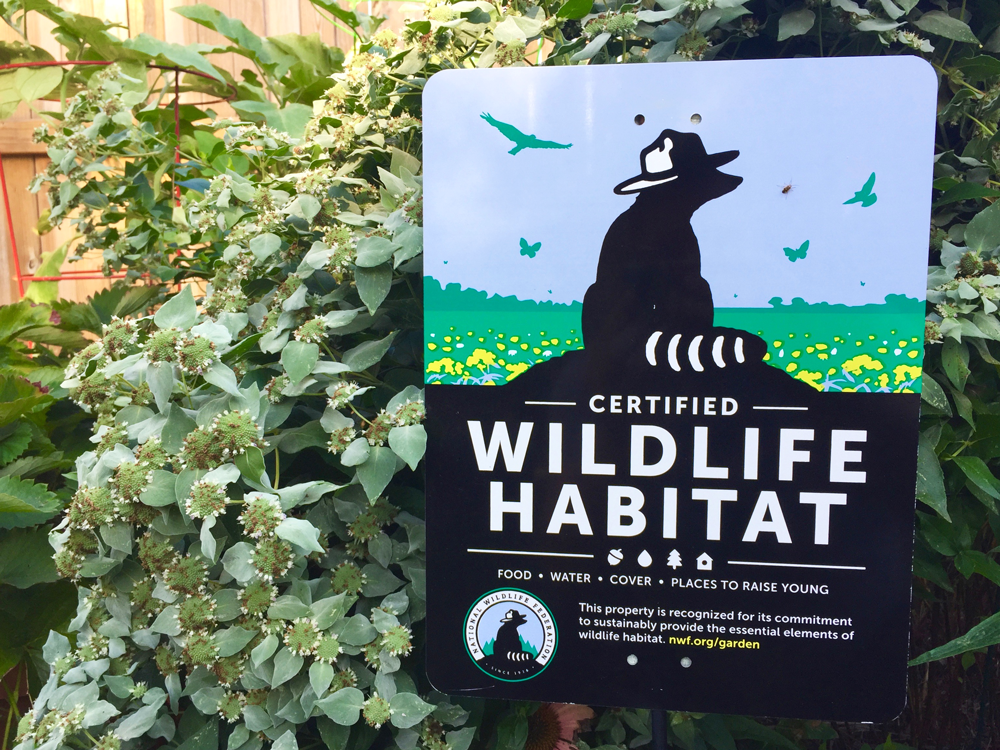
Image courtesy National Wildlife Federation
Strategy Two: Frames
When we hang a piece of art on our wall, it has a frame, a border which implies intent. Something framed feels different than a poster we just tack onto our wall with push pins like our old dorm room. Your landscape works in much the same way.
A frame can take many forms, from a low fence or stacked wall of wood or stone, to my favorite and the simplest of options — a mown border. Maintaining a mown frame around your landscape of about 3’ will help people know you haven’t just “given up.” Regardless of what’s happening beyond the frame — sheet mulch, black plastic, or dead turf (more on that below) — that frame, in tandem with your interpretation, will tell people that you’re still home, you still care and you’re acting with intention. This is especially helpful for areas along sidewalks, because when vegetation overtakes an edge, it can quickly feel neglected, an impression we want to avoid.
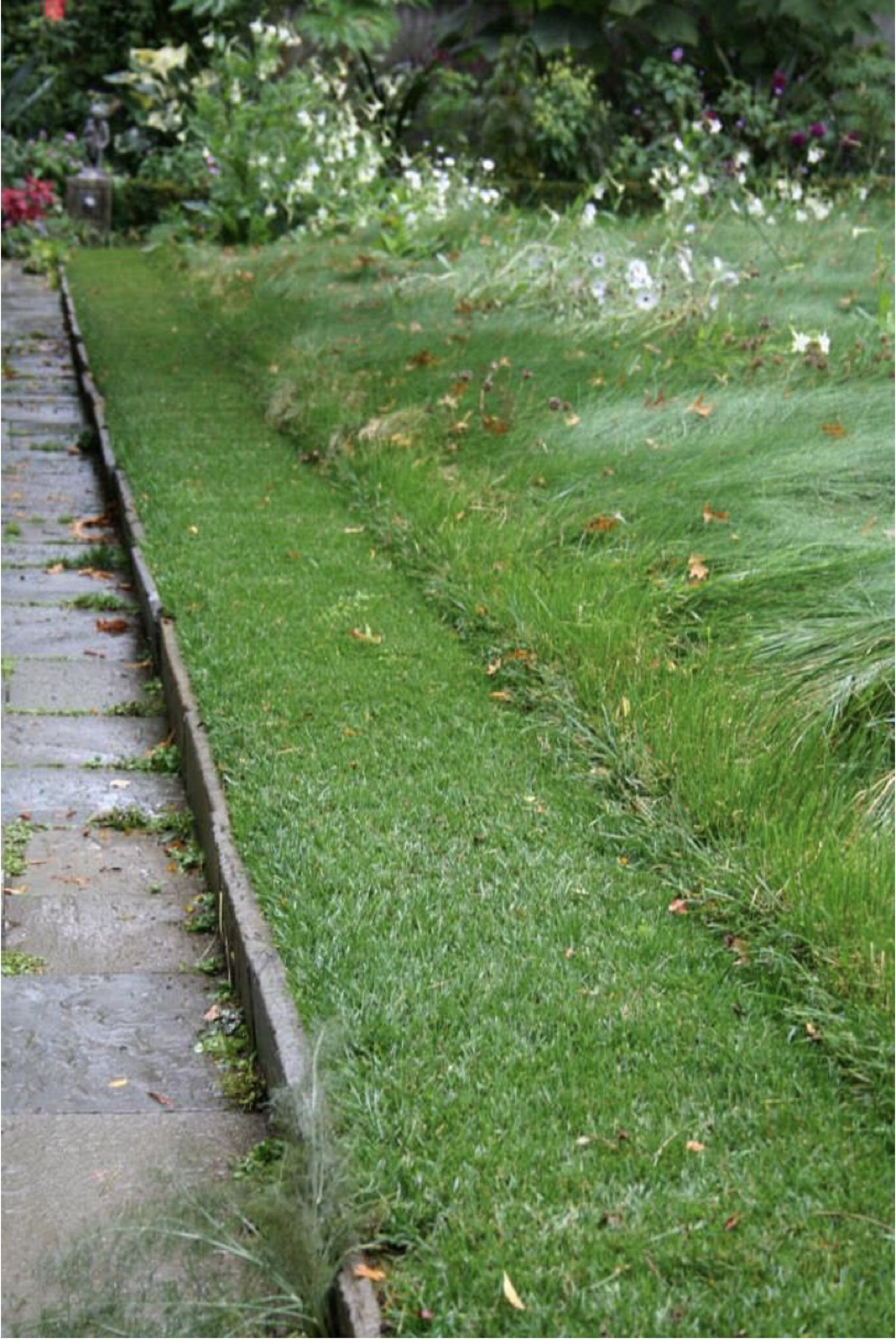
Image courtesy of Ben Futa
These strategies should be applied at the beginning of any lawn conversion, no matter how you choose to go about replacing your turf. Now, it’s time to dig in, and today, we’re exploring four options, each with varying levels of input, duration of time and environmental impact. Ultimately, the choice is yours. The good news: you have options.
Option One: Sheet Mulch
Save your boxes! Cardboard is an essential ingredient in this process, and you’ll need a lot of it. Begin by removing as much plastic and labels from your boxes as possible. If you can’t get it all, don’t worry, they’ll turn up later when you’re planting and can be removed at that time.
Lay out your boxes over the area of turf you want to replace, and be sure the edges overlap at least 4” to make sure nothing can grow through. In this method, our goal is to deprive turf of light, so this overlap is critical. Once the boxes are down, you’ll need a lot of mulch. Bark or wood chips work best.
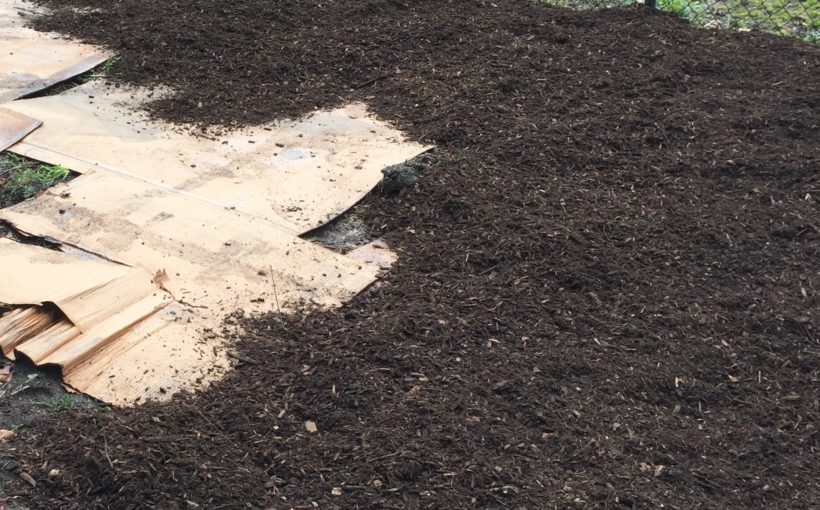
Image courtesy of spottsgardens
Add mulch on top of your boxes about 4-5” thick. This helps keep your cardboard from blowing away while also beginning to generate organic matter for your future garden. The cardboard will gradually melt away as it gets wet and decomposes, and the area should be ready to start planting within 3-4 months. When you’re ready to plant, pull back a small area of mulch until you reach your soil, and plant through any remaining cardboard at this depth. Replace the mulch after planting, being careful not to bury your new plant. You shouldn’t need to add additional mulch for a couple years, if ever.
Before planting, be sure your turf is really and truly dead and rotting away. It should be brown and may be slimy. If you see white/bleached leaves or lots of healthy, white roots when you dig a test hole, replace the mulch and cardboard and wait a bit longer. If you plant too soon and turf is able to rebound, you’ll be fighting it back forever. It’s no fun, and it’s not a cute look.
Option Two: Solarize
This method requires investing in a big roll of impermeable black plastic. The “weed barrier” fabric you’ve likely seen in big box stores will not do the trick, nor will clear plastic sheeting that lets light through. Black, opaque, UV-resistant, impermeable plastic is the best choice. In this method, we’re depriving the turf of both light and (most) moisture.
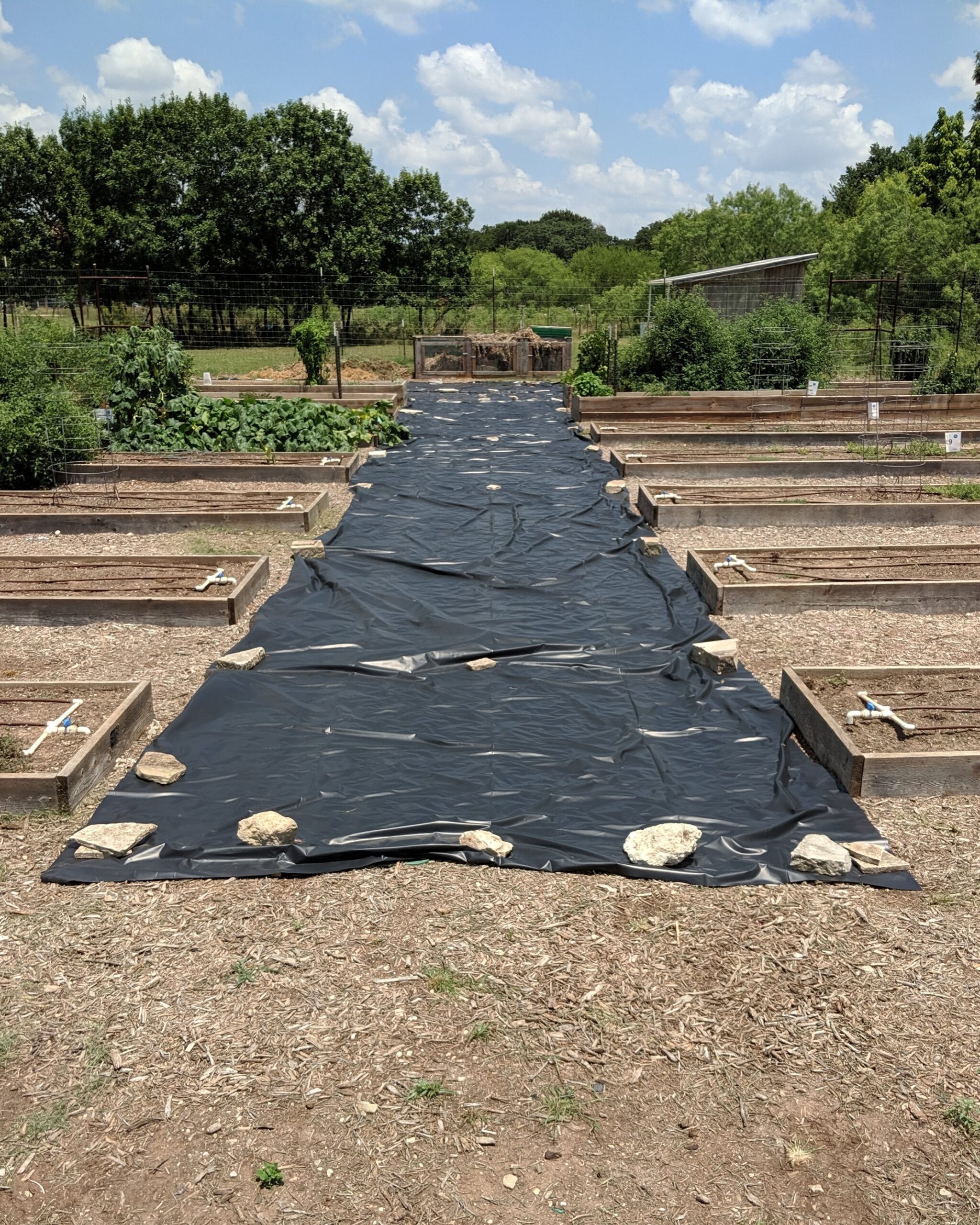
Image courtesy of Phil Hardberger Park Conservancy
First, mow down the area you plan to solarize to about 1.5-2” tall, and rake away any excess material. Remove any sharp objects like tree stumps, old plant stems, and substantial rocks. This will help when it comes time to roll the plastic out over the area. Use something like old stones, bricks, or sod staples to secure it in place as you go, otherwise the wind will catch it and take it halfway across the county before you can blink. Be sure to overlap the edges at least 4” to make sure nothing can grow up from below the plastic.
Plan to leave the plastic in place for an entire growing season. On hot summer days, the plastic will pick up heat from the sun and cook your turf and soil. This has a double benefit in that it also removes some potential weed pressure by killing off weed seeds in the top layer of soil, a helpful benefit when it comes time to plant.
If you put down your plastic this spring, you should be clear to remove it and plant in early-mid September. You’ll still want to add a 3” layer of mulch before planting (to keep weeds at bay), and then you’re clear to start adding plants anytime! The one drawback of this method is the plastic is hard to reuse a second time — not impossible, just labor intensive. I know it may seem counterintuitive to cover your lawn with plastic when we’re trying to go green, but it will do the job! Check with friends or neighbors to see if anyone wants to kill off some lawn after you’re done with it 😉 Reuse and recycle!
Option Three: Dig it Up
This is by far the most labor-intensive route. Bonus: it burns tons of calories! Turf is notoriously shallow-rooted, making it possible to remove manually. You have options in terms of how you dig, depending on the size of the area you’re planning to plant. If you’re creating a relatively small garden bed, I’d recommend your trusty shovel, digging the turf out in small chunks. Be sure to shake off as much soil as you can in the process. You can hypothetically add the old turf to your compost pile, just know it can take at least a year to break down fully. I’ve found it helpful to place it grass-side-down on my compost pile, effectively depriving the grass of light which will help it rot a bit faster.
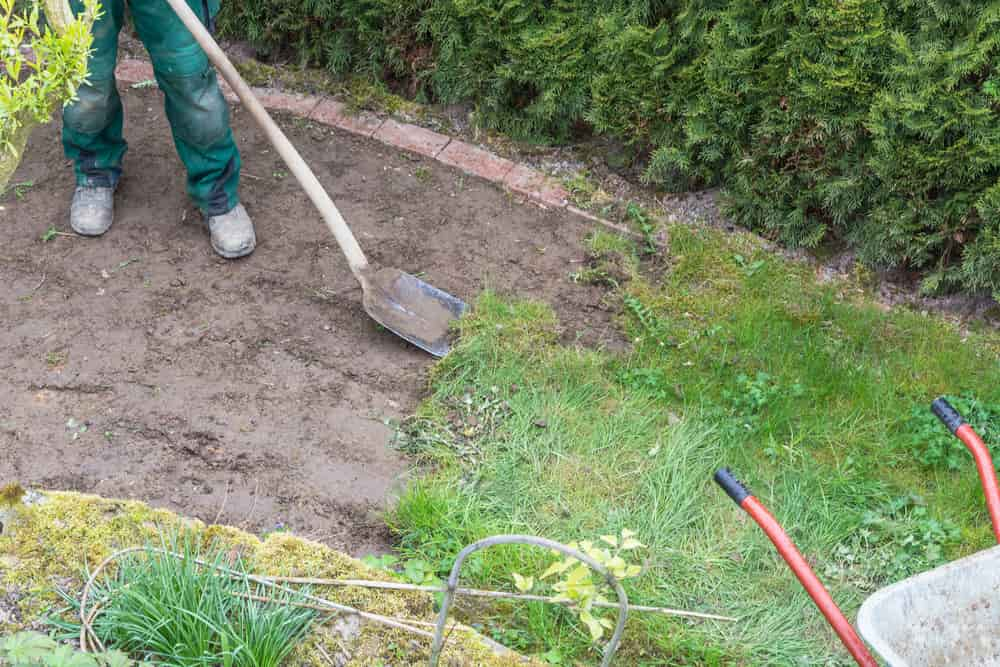
If you’re planting a larger area, you can also rent a sod cutting machine, which will make it possible to roll up your old turf like a carpet. It’s still labor intensive, plus the expense of renting the machine, and you’ll likely have to think about disposal as this volume of material probably can’t fit on your compost pile.
One important note if you go this route is to remember that in churning the soil as you will through digging, you’re releasing weed seeds that have been dormant, waiting for their chance to grow and we call this a seed bank. These seeds are triggered to grow by light, and you’ll no longer have turf to shade the soil. If you’re digging, plan to apply a 3” layer of mulch within three days after planting — the sooner the better, really — to prevent weed seeds from popping up and creating a management nightmare.
Option Four: Herbicide
Using a chemical herbicide is the quickest way to remove turf for other plantings. It can be applied in a few minutes and can get a site “plant ready” within 3-4 weeks once the turf is fully dead. This will also save your back, knees and hands because you don’t have to physically remove any turf. We simply allow it to decompose in place and then add our plants right into the old turf. This is especially helpful on sloped sites where exposed soil or loose mulch might erode in a heavy rain storm, as the old turf will help keep that soil in place while our desirable new plantings get established.
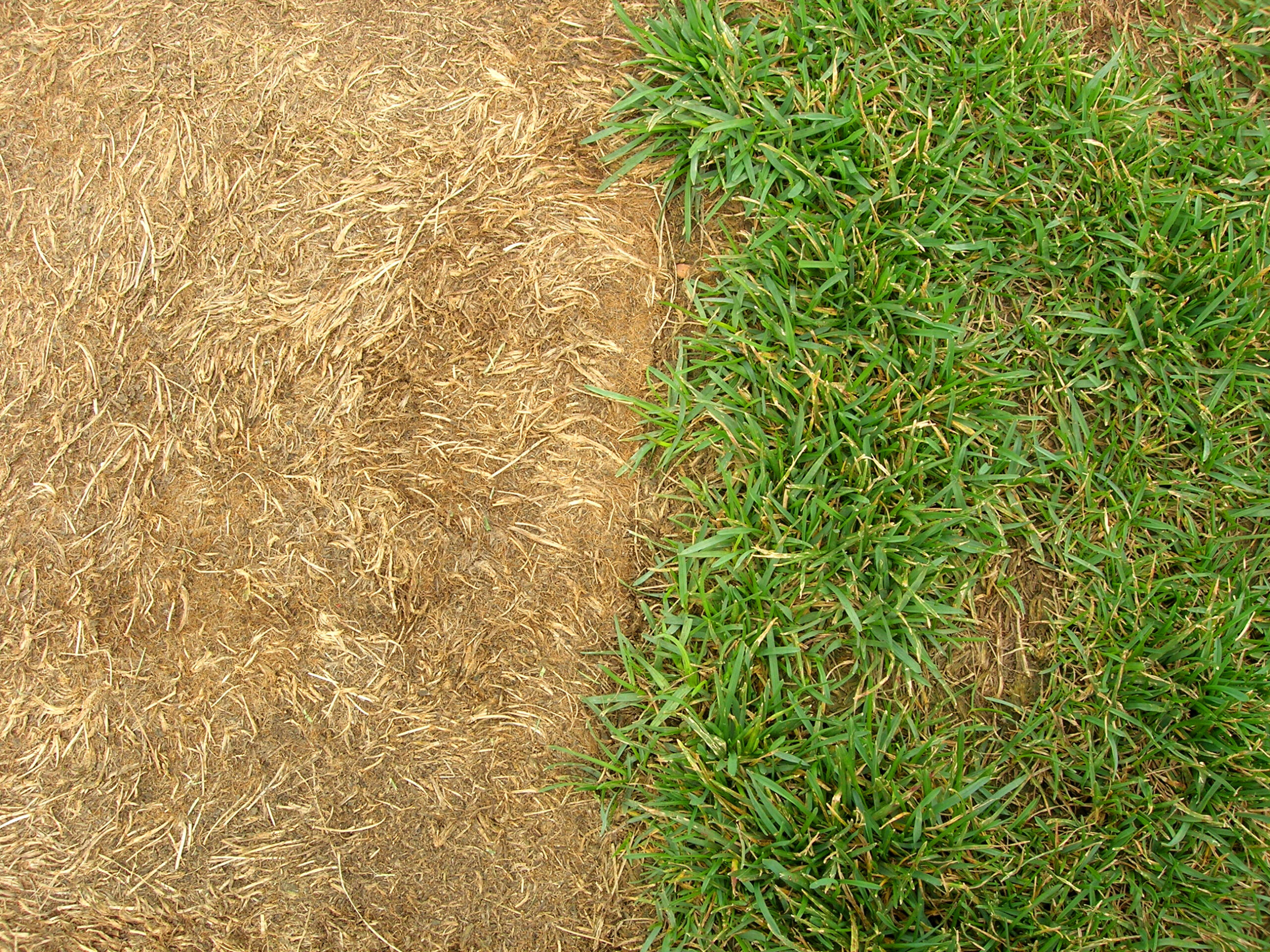
Photo courtesy of Flickr user Dano
I know it may feel highly counterintuitive to use a chemical herbicide when we’re trying to move away from conventional lawns which are so harmful to our environment, and here’s how I see it: using herbicide to kill your lawn is the last time you’re ever going to need a chemical, and it will save you a lot of time and labor in the process. It’s all up from here, and everything you do going forward will be making your own outdoors a more sustainable, resilient and ecological paradise. It’s also worth noting that in any circumstance when chemicals are involved, safety is paramount. Follow all safety guidelines and best practices, including not spraying on a windy day, wearing proper protective gear and clothing, and keeping your spray nozzle within 12” of the ground to help prevent drifting. You can always contact a local professional who can help.
Any day is a good day to replace your lawn with something better. If you have a large lawn, don’t panic. What matters is forward motion. Don’t feel like you have to replace your entire lawn in a single season: tackle it in stages and phases as you’re able. My own lawn conversion took a full growing season and happened in four stages, and I’m also growing in a tiny urban lot so I didn’t have much space to convert to begin with. Even so, I still did it in phases because I opted to dig most of it and couldn’t afford enough plants to fill it all at once. Forward motion is what matters. Period.
The bottom line is simple: our landscapes represent one of the easiest ways we can contribute to a more sustainable, connected world and vibrant community. Think of your community like a quilt – the more pieces we repair and stitch together, the stronger, more beautiful, and more diverse our communities become as a result.
We’ll be back later this season to follow our lawn conversion project in progress, so you’ll be able to see how we finish preparing a site, layout and plant our plants, and watch as it grows and changes throughout its first growing season.
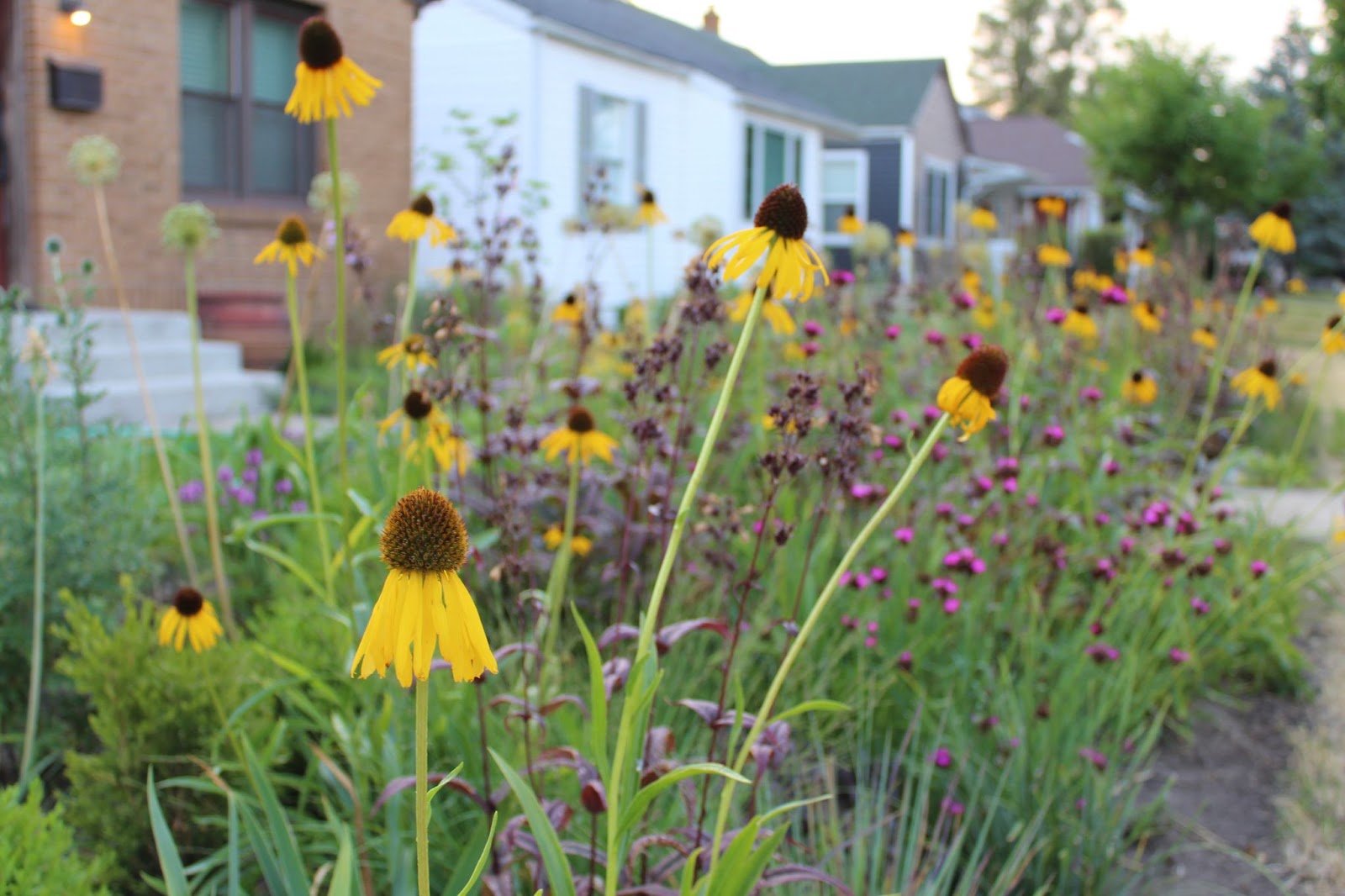
This photo and cover photo courtesy of Ben Futa
 Passport
Passport




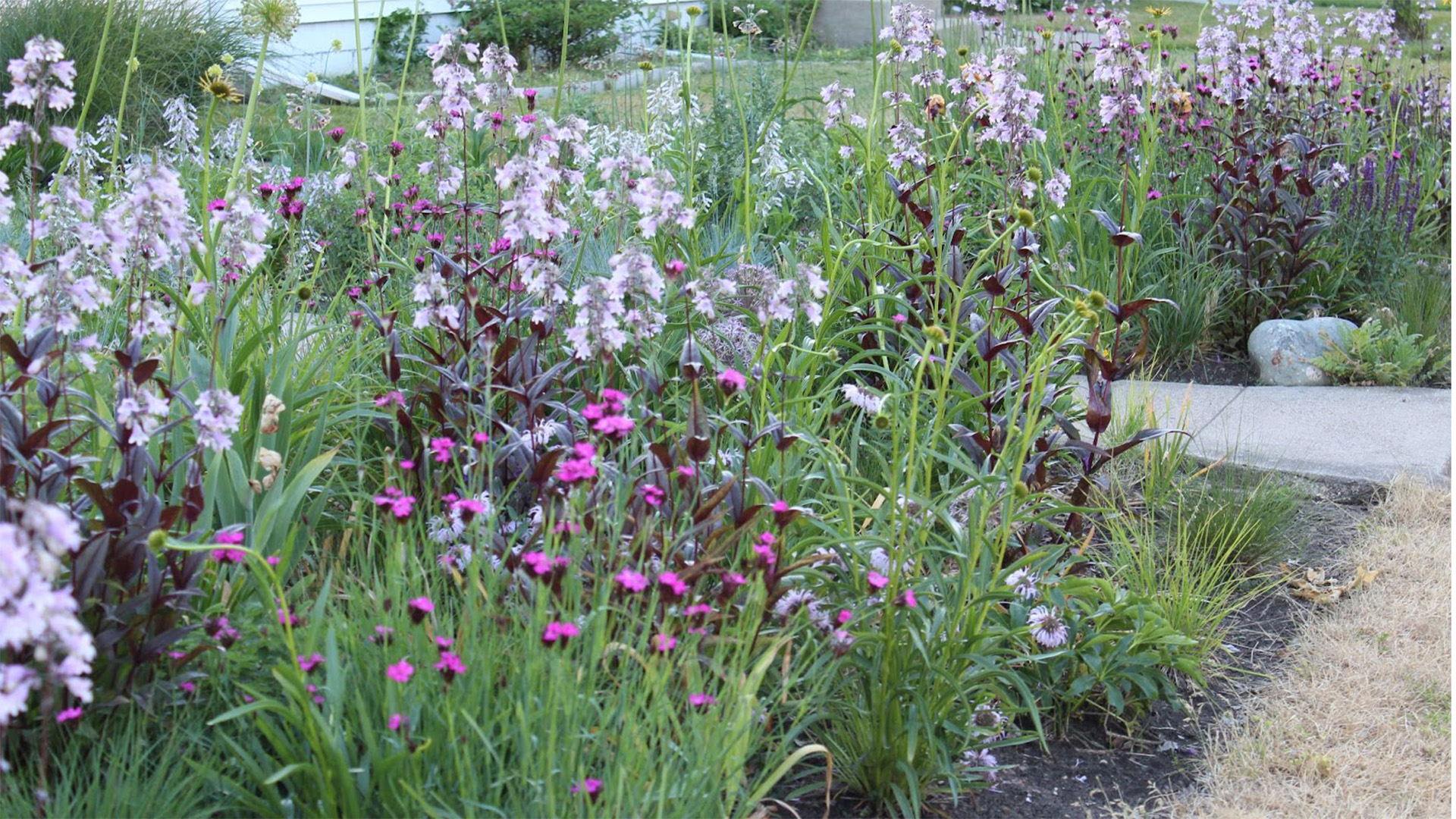

grass cut services says:
This guide is such a refreshing take on lawn alternatives—perfect for beginners who want a more eco-friendly yard! I appreciated the practical tips and the encouragement to start small. Even for those still using traditional lawns, it’s helpful to know that local grass cut services can assist in managing transitions or maintaining areas while other parts evolve. Thanks for making sustainable landscaping feel doable and inspiring!
debi mosley says:
i love reading about this and would love to do it. but one picture showed the little flower ground cover all over the yard… you cant walk in you r yard if you have ground cover can you ? wouldn’t it just smash down the little flowers/clovers? or you do an alternative grass in patches..? it’s hard to do this with grandkids and dogs. but it sure is pretty!
Steve Smith says:
I appreciate that you explained that removing unhealthy turf could help provide a safe landscape process for your property. My best friend told me last night that he wanted to buy a bluegrass seed for the best turf condition in his landscape project. He asked if I had ideas on the best turf guide. I’m thankful for this valuable turf guide article for the best planning approach. I’ll tell him it will be much better if we consult a trusted turf service as they can help us with our turf questions.
Roxi Erickson says:
My front lawn was invaded by creeping charlie. What a nasty plant. I’ve tried to get rid of it. No luck so over memorial weekend I dug up 4 small areas of my lawn and planted flowers and hostas love it so happy and then to read the article was cool. Thanks
Gerri Gurman says:
This is exciting! I want to learn more. I’d also like to se if my gardener can help me and others as well. I’m definitely not wanting a lawn except for a strip of my yard where my grandkids can play.
Jen B says:
This is inspiring! I have a neighbor who is struggling with a prairie. She began last year as a portion of her yard. The plants are not thriving. Any ideas where she might read and go for assistance in Dan county? I suggested she call the county Extension office. Any other resources for an already planted struggling “prairie to be” owner?
Sarah S says:
She could try reaching out to Wild Ones – Madison has a chapter. Lots of native plant experts and someone might be willing to visit and give some suggestions. The book Prairie Up by Benjamin Vogt is also great.
Susan Millar says:
Regarding “Let’s Grow Stuff,” see this recent NYT article: “Let the Post-Pandemic City Grow Wild”: https://www.nytimes.com/2023/05/09/opinion/urban-gardens-rewilding-cities-biodiversity.html?campaign_id=9&emc=edit_nn_20230510&instance_id=92204&nl=the-morning®i_id=207561690&segment_id=132562&te=1&user_id=914dfbc59a66981c936b7bc19e148e2c
Here is an excerpt from this article: “Imagine a city latticed with lightly cultivated wild spaces, microforests and roadside meadows. (For that matter, imagine the manicured neatness of suburbia blooming with wildlife gardens in place of ecologically impoverished, pesticide-soaked lawns.) That would be a different kind of city, where the human and the natural coil together and where the conventional cityscape is visually enriched by exuberant wildlife.”..
Alice says:
Wonderful and thorough article! Thank you!
A question: How could I find out if my community/area has an incentive to offset converting lawn to pollinators? Are there monies available in Wisconsin? I am in the Eau Claire area. Thanks
Amy says:
The DNR native plants webpage has lots of good suggestions and helpful tips! https://dnr.wisconsin.gov/topic/endangeredresources/nativeplants.html
Tracy Elliott says:
I more than ready to get rid of the lawn! I have no idea what to plant that would lool nice. Be native and good for polinators.
Charlene Gurney says:
Google native plant nurseries in Wisconsin. There are quite a few of them. Some of my favorites are Agrecol and Prairie Nursery. They have ideas for planting based on soil type, sun or shade and moist or dry soil. You can buy flats of plants or just a few. They also sell seeds if you prefer. Ship to your home. I’ve had very good luck with both of these places.
Susan Millar says:
Your article is WONDERFUL – thank you! Folks in England who are doing this are part of the “We Are the Ark” movement: https://wearetheark.org/what-is-an-ark/. I have a wooden “THIS IS AN ARK” sign in my all-perennials front yard. This sign helps passersby understand what I am up to. It works. It’s beautiful, and loaded with pollinators (insects and birds) and little mammals (which I like).
Donna Neuber says:
Thank you for this information. I can’t wait to find out more about the lawn conversion project.